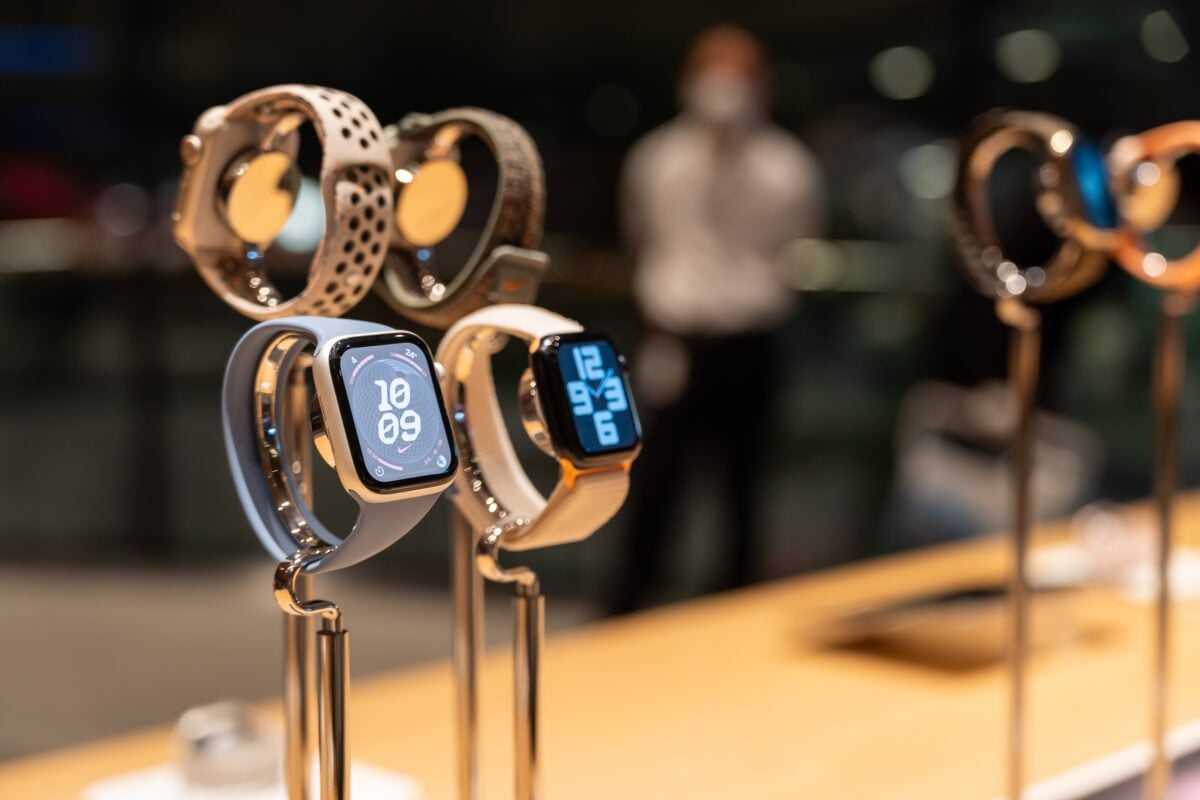TLDRs;
- Apple Watch will launch FDA-cleared hypertension detection next week across 150 global regions, including the U.S. and EU.
- The feature analyzes blood vessel responses over 30 days to detect chronic high blood pressure early.
- Apple’s FDA clearance contrasts with WHOOP’s regulatory hurdles, highlighting the importance of clinical validation.
- The global wearable health market is expected to exceed $160B by 2030, fueled by rising health tech adoption.
Apple is preparing to launch one of its most ambitious health-focused features yet, hypertension detection, on its latest smartwatch lineup starting next week.
The rollout comes after the U.S. Food and Drug Administration (FDA) granted clearance for the feature, a milestone that underscores Apple’s growing role in digital health innovation. The tool will be available in 150 countries and regions, including the United States, European Union, and Hong Kong.
The hypertension detection function uses the Apple Watch’s optical heart sensor to evaluate subtle changes in blood vessel responses to each heartbeat. By analyzing this data over a 30-day monitoring period, the device can flag potential signs of chronic high blood pressure. Users will receive a notification if patterns associated with hypertension are detected.
The feature is compatible with the Apple Watch Series 9, Series 10, Series 11, Ultra 2, and the newly announced Ultra 3.
Apple Watch helps millions better understand their health simply by wearing it.
Today we introduced two powerful new features: one that will notify you if it detects signs of hypertension over time, and sleep score to give you more insight into the quality of your sleep. pic.twitter.com/f1cvPYy46Y
— Tim Cook (@tim_cook) September 10, 2025
Hypertension, A Global Health Crisis
Apple’s latest update arrives at a time when hypertension, also known as high blood pressure, remains one of the leading risk factors for life-threatening conditions such as stroke, heart attack, and kidney disease.
According to the World Health Organization, nearly 1.3 billion adults live with the condition worldwide, with many unaware of their diagnosis until complications arise.
By embedding hypertension monitoring into a widely adopted consumer device, Apple hopes to bridge the gap between preventive care and everyday health management. Experts suggest that the feature could empower millions to take earlier action on their cardiovascular health, potentially reducing the burden on healthcare systems globally.
Apple vs. Competitors
Apple’s FDA-approved hypertension tool also highlights a growing divide in how regulators approach health technologies. Earlier this year, the FDA sent a warning letter to fitness wearable company WHOOP, classifying its blood pressure monitoring tool as a medical device requiring pre-market approval. WHOOP had argued its feature was a wellness tracker, not a medical product.
In contrast, Apple invested heavily in clinical validation, sourcing training data from studies involving more than 100,000 participants. This strategy provided regulators with the robust evidence required for Class II medical device clearance under the FDA’s 510(k) process.
The difference in regulatory outcomes underscores the high stakes in the booming wearable health market. Companies with strong compliance strategies and clinical rigor are increasingly positioned to dominate.
Wearable Health Market Expands Rapidly
Apple’s regulatory win comes against the backdrop of explosive growth in the wearable health sector. Analysts project the global fitness tracker market will climb from $60.9 billion in 2024 to nearly $162.8 billion by 2030, reflecting a compound annual growth rate (CAGR) of 18%.
In the United States alone, the market for medical-grade wearable devices is expected to surpass $100 billion by 2033, growing at an impressive 25% annually from its current $11.45 billion valuation. Consumer demand for health-focused technology, coupled with improved sensor accuracy and AI-driven analytics, continues to fuel adoption, even as companies navigate increasingly complex regulatory environments.






